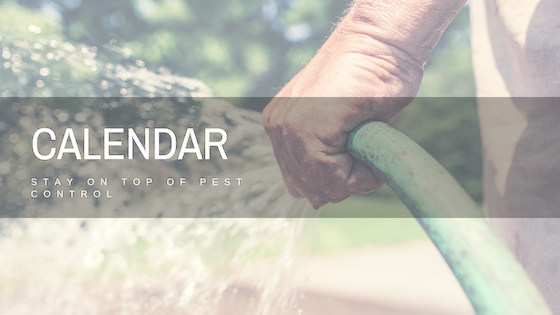Plant Pest Control Planning
Introduction
Most biological pest controls will only work if the pest is present, the pest is their source of food. This guide focusses on growing outside and in greenhouses. For houseplants pests may be present all year, they will grow in numbers when it is warm and there is more natural light so be extra vigilant in summer months.

January
- Check over your notes from last year, what pests did you see and when did you start to see them?
- Set yourself reminders to check for these pests earlier this year
February
- Make sure you have some Horticultural Soap in stock, use at the first sign of any pests
- When sowing seeds, position yellow sticky traps amongst the trays to identify any pests early
March
- Apply slug and vine weevil nematodes as soon as your soil temperature reaches 5°C. These will need to be reapplied every 6 weeks
- If you suffered with whitefly, thrips or spider mites last year, start introducing their natural predators as a preventative
April
- Check for and treat fungus gnats (Sciarid Fly) with nematodes and sticky traps
- Check for aphids (greenfly/blackfly), spray with Horticultural Soap everyday and order some live predators
May
- Be vigilant, thrips and spider mite can spread quickly and cause serious damage
- Look out for adult vine weevils, use vine weevil traps and keep up the nematode treatments
- Treat for whitefly when you see them with the parasitic wasp Encarsia Formosa

June
- June is peak pest season, you may feel under siege, it’s not just you! Most plants will be able to withstand a bit of nibbling.
- Aphid controls are a must, lacewing and ladybird larvae are great
- Keep ant numbers down with nematodes, ants will farm aphids and stop the natural predators from getting to them
July
- In hot weather spider mites can grow in numbers incredibly quickly, keep plants cool and damp and introduce Phytoseiulus predatory mites
- Vine weevils will be busy laying eggs and nibbling the leaves of shrubs, replace traps and keep up nematode treatments
August
- If you’ve been using nematodes, you may not have seen many slugs this year. Now and into the autumn is key for treating them, they are laying eggs and the population is swelling
- Thrips will remain a problem as they come across from farmland

September
- Have you been noting down any pest issues you have had? Now is a good time to review your notes (or make them!) so that you can be prepared for next year
- Treat lawns for chafer grubs and leatherjackets, these may also be present on areas that were previously grass
October
- Get your last slug and vine weevil treatments down
- If you have had aphids, spider mites or thrips this year you need to have a really good clean up, these pests all overwinter and will come back in bigger numbers next year
November
- Clean pots, trays and other tools thoroughly
- Disinfect greenhouses and other structures
December
- If starting things off for next year, set up sticky traps
- Treat fungus gnats (Sciarid Fly) with nematodes
If you need help with a plant pest and you can't find the answer email plantcare@ladybirdplantcare.co.uk.


